Replating protocorms
necessary tools
- laminar flow hood
- alcohol burner
- 2 forceps
necessary articles of consumption
- flasks with media
- 70% ethanol
- cotton pads
We use glass jars with a volume of about 350ml for replating. They are sealed with cling film. More information can be found in our article "closing in vitro flasks with cling film".
When do I have to replate my protocorms?
Let the protocorms grow on their media as long as they don't harm themself or till they start to build first roots. The bigger and healthier they are the better they survive replating. We put a very small quantity of seeds in each flask, so we can wait a little bit longer and the protocorms are stronger when we replate them.
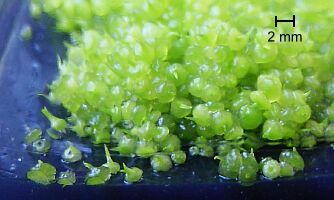
Preparing the flasking area
This document describes the procedure of flasking orchid seeds in a LFH (laminar flow hood). Detailed informations how a laminar flow hood works and how to build it are available here. The following photo shows our LFH and all required tools. In the laminar flow hood there should be as less things as possible to reduce the risk of contaminations to a minimum.
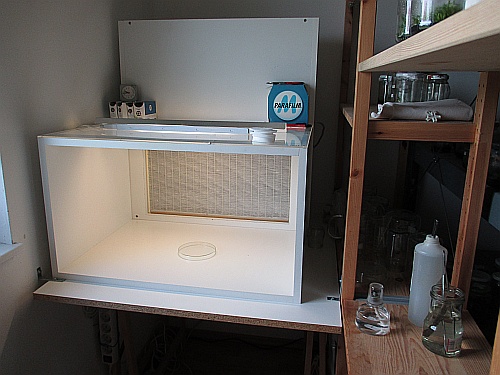
The flasking area has to be sterilized before you can start working in it, because contaminations get in contact with the flasking area when the LFH is turned off. We soak a kitchen paper with 70% ethanol and use it to clean the flasking area after turning on the LFH.
Replating technique
The following steps must be done in the sterile area (steam). Open test tubes and their cotton plugs have to stay in the steam till the test tube is closed again.
Take a test tube, which contains the protocorms, bring it into your flasking area and remove the aluminium foil cap.
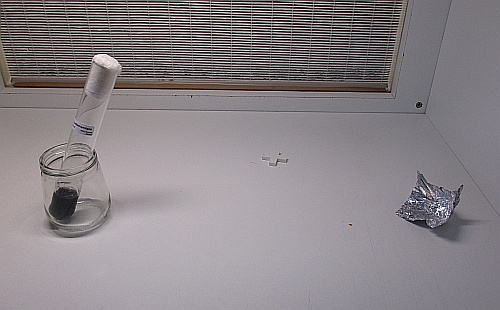
Flame a forceps and use it to remove the cotton plug. Place the plug in the foil cap.
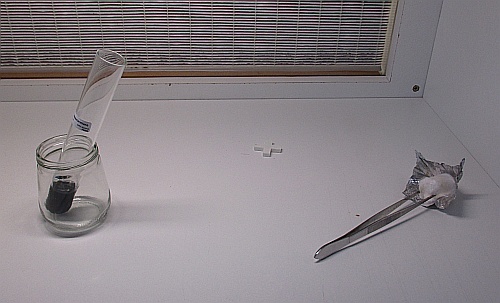
Next, take one of your replating flasks, open it in the flasking area and use a flamed forceps to transfer some protocorms into it. Close the flask and move it outside of your flasking area for later labeling.

The following photos show two flasks immediately after replating. Don't put more seeds into them, because to many seedlings in a flask harm themself.
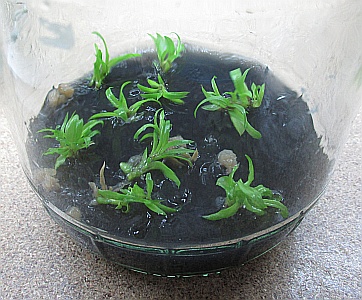
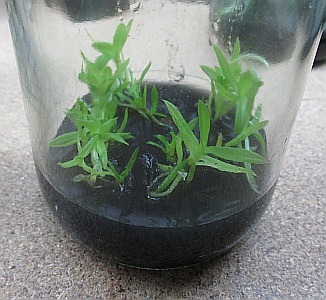
Further care
You should keep your flasks in a bright and warm (20 - 25°) place. It is very important to prevent direct sun, because the seeds in the flasks will become to hot if they get direct sun. Beside nature light, artificial light can be used as well. We prefer T5 fluorescent tubes with light color 865. T5 tubes need less power and they do not get that warm as T8 tubes do.
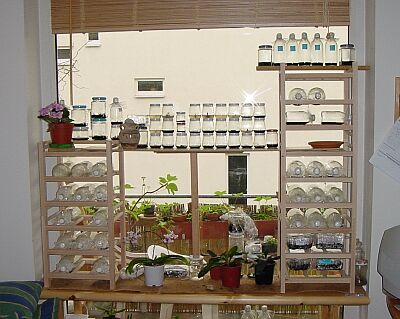
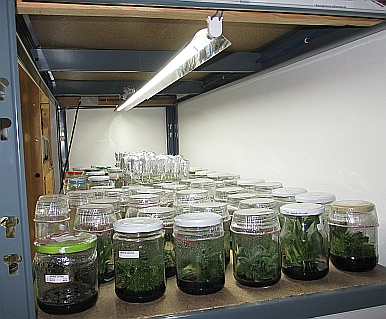
Author: Thomas Ederer
